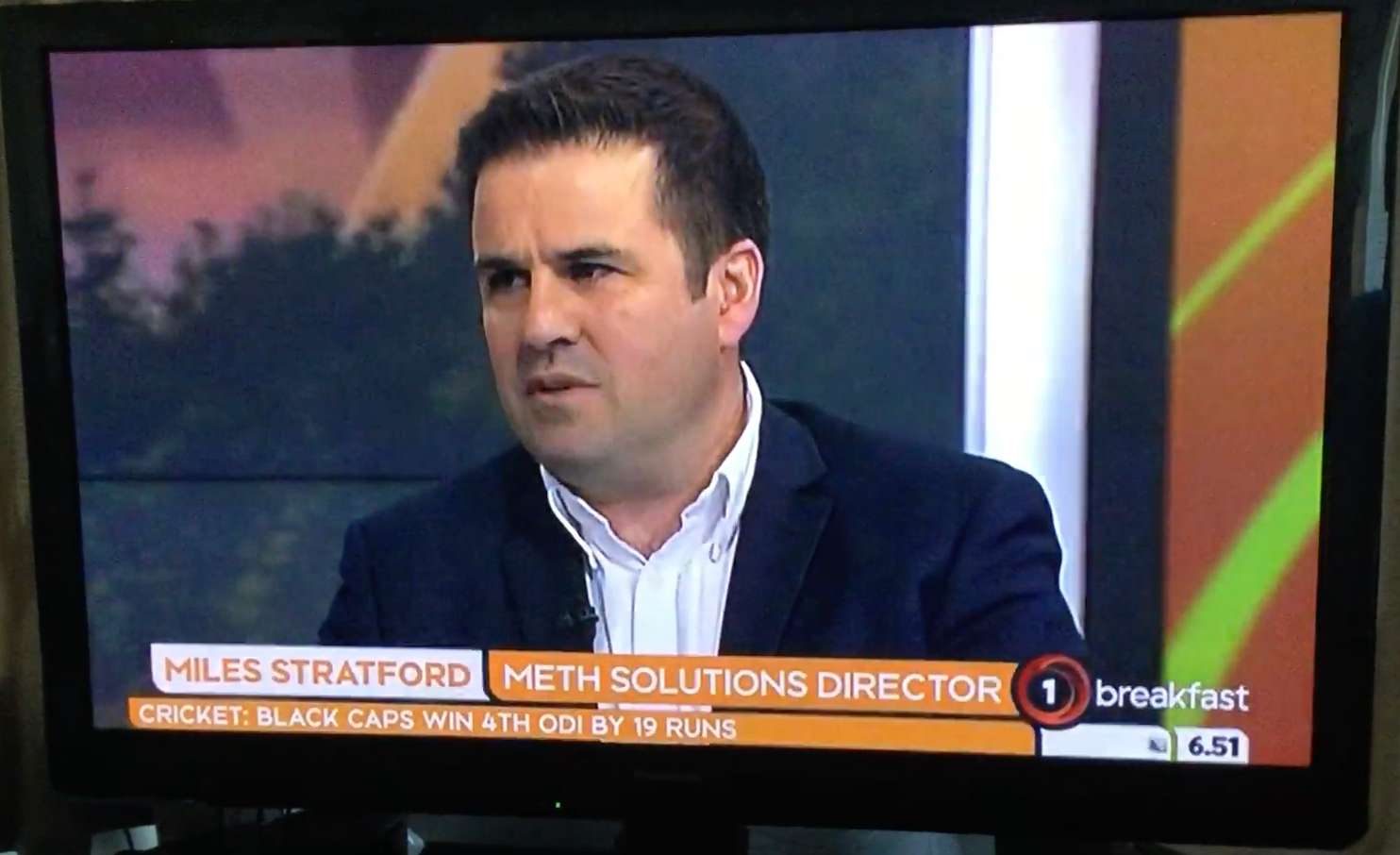Interview date 27th October 2016.
Jack Tame, TVNZ: An investigation into Methamphetamine levels could mean that Housing New Zealand evicted some of its tenants unnecessarily.
Every year thousands of homes test positive for traces of “P” and then millions of dollars is spent cleaning them up. Now new recommendations from the Ministry of Health seem to suggest some homes are being decontaminated unnecessarily. Director of MethSolutions Miles Stratford is with us this morning, Good Morning
Can you in the simplest possible terms explain the Ministry of Health’s new guidelines?
Miles Stratford: The new guidelines have essentially delineated between where use-related behaviour is taking place within a property over where manufacture has taken place within a property.
TVNZ: so right, of most concern to people who are in houses where there has been a presence of P being a house where P has been manufactured rather than where P has simply been used?
MS: Certainly there is greater concerns where manufacture has occurred because there is a broader range of other chemicals that are present as well as methamphetamine.
TVNZ: What is the difference in terms of the actual traces you find in a house between a property where P has been used and a property where P has been manufactured?
MS: Typically where methamphetamine is concerned and manufacture has occurred the levels are going to be much higher. And that’s certainly the case when you have had a meth lab that has been operating over an extended period of time. One of the challenges in trying to decide whether it’s use or manufacture is that meth labs are highly mobile, they do move around and they can set up for a very short period so what might look like use-related behaviour in terms of the levels of methamphetamine may have in fact occurred because of manufacture taking place.
TVNZ: So they may be there for a sake of weeks or something like that?
MS: Overnight.
TVNZ: Oh, wow – a really small period of time.
MS: Exactly.
TVNZ: For the chemicals that you discover, in your line of work things like the carpets are of most concern?
MS: Yes, so what happens with carpets is that they absorb the residues whether it’s methamphetamine from use or methamphetamine and other chemicals from manufacture so it becomes absorbed into the carpet itself. So if you test just the surface of those materials then you will get a very low reading which is not indicative of a significant problem.
TVNZ: Right. Do these new guidelines mean that Housing New Zealand might have unnecessarily moved people out of houses?
MS: I think that one of the things that Housing New Zealand has done is that in the absence of specific guidance in New Zealand around use-related behaviour is to have adopted a precautionary approach. Which is sensible when it comes to how they engage with meth contamination of property. In Australia for example, where the guideline levels are the same as New Zealand when it comes to residential property, those guidelines specifically reference the fact that they should apply to use-related behaviours as well as manufacture.
TVNZ: Because the Ministry of Health has also been looking at California’s guidelines.
MS: Yes.
TVNZ: How do we compare to California?
MS: So California’s one of the States that has adopted a higher level of 1.5 micrograms so that’s three times what we have got in New Zealand. California is also a State where you can use methamphetamine on the street and not get arrested for it!
TVNZ: Really? It’s not illegal?
MS: Use of the drug over in California doesn’t attract the same level of interest as it does in New Zealand.
TVNZ: Interesting.
How prevalent is this? From your experience at the moment, how often are you seeing properties that have had P use and how often are you seeing properties that have potentially had P manufacture?
MS: So meth residues once they are in a property stick around for many years. So what we are seeing when we are going into a property and most of the people who are asking us to go and have a look at the property are people looking to buy.
Most people’s “acceptable” level of methamphetamine in a property is zero as opposed to what might be determined by any guidelines. Because it sticks around for years, we are not just looking at what’s happening today, and the ongoing use and manufacture of methamphetamine, we are looking at 15-20 years worth of history. And that’s why around 40% of the properties that we’ve sampled have got traces of methamphetamine within them. Now of that, the vast majority is going to be use-related behaviour. But I suspect that between 5 and 10% of that have had some level of manufacture taking place within them. And even in those properties where it’s limited to use-related behaviour, you can still get levels of methamphetamine which is far higher than those that we are seeing in the current guidelines.
TVNZ: But do you accept the Ministry of Health’s Guidelines?
MS: Based on the research that has been done, and the recommendations that have been made by the scientists involved, then they are obviously justifiable. The slight concern that I have is that that research that’s been done doesn’t include a review of literature, it doesn’t include the latest research coming out of Australia which indicates that the assumptions made as far as that is concerned may be underestimated.
TVNS: Miles Stratford from MethSolutions, thank you very much.


